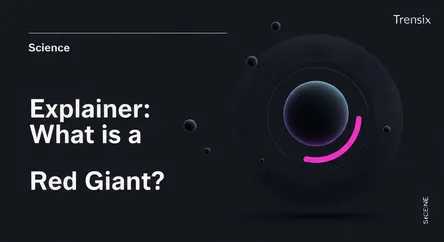Science
Explainer: What is a Red Giant?

Discover the red giant, a dying star in a late stage of stellar evolution. Learn what happens when a star like our Sun runs out of hydrogen fuel.
What is it?
A red giant is a luminous, massive star in a late phase of its life. This stage occurs when a star, similar in mass to our Sun, exhausts the hydrogen fuel in its core. Without the outward pressure from hydrogen fusion, gravity causes the core to contract and heat up. This intense heat ignites hydrogen fusion in a shell surrounding the core, causing the star's outer layers to expand dramatically and cool down, giving it a reddish-orange appearance. Our own Sun is predicted to become a red giant in approximately 5 billion years, swelling to a size that could engulf the inner planets, including Earth.
Why is it trending?
Advances in telescope technology, particularly from the James Webb Space Telescope (JWST), have brought red giants into focus. Astronomers are now able to study the complex atmospheres and dusty shells of these dying stars in unprecedented detail. Recent observations have even captured planets being consumed by their expanding red giant stars, offering a dramatic preview of our own solar system's distant future. These findings are crucial for refining our models of how stars evolve and how planetary systems end, making it a hot topic in astronomical research.
How does it affect people?
While the Sun's expansion into a red giant is a far-future event, studying them is fundamental to understanding our place in the cosmos. It provides a clear scientific prediction for the ultimate fate of Earth—it will either be swallowed by the Sun or scorched into a barren rock. On a grander scale, understanding the red giant phase explains how heavier elements, forged inside these stellar furnaces, are dispersed into the galaxy through stellar winds. These elements become the building blocks for new stars, planets, and potentially life, directly connecting our existence to the life cycles of stars.